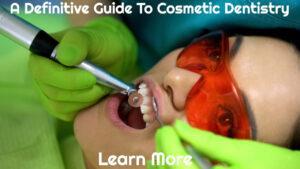Veneers – Solutions for Tooth Imperfections
Dental veneers are frequently used by cosmetic dentists to improve patients’ smiles. Dental veneer placement is considered a cosmetic surgery by professionals because it is elective rather than medically required. It can, however, preserve teeth from harm.
What Are Dental Veneers?
Dental veneers are tooth-coloured materials that are used to conceal the damage, discolouration, and malformed teeth. Before being fastened to the teeth’s surface, the various resins used to manufacture dental veneers are custom-made to fit the rest of a patient’s mouth flawlessly. Because the benefits of dental veneers are mostly cosmetic, dentists prescribe veneers for reshaping patients’ front teeth rather than molars. Inlays and Onlays are more cost-effective for molars.
How Do Dental Veneers Work?
The procedure for fitting patients for dental veneers is straightforward. An initial consultation will be scheduled by a dental practitioner. During this appointment, they will examine and assess the patient’s teeth to determine whether dental veneers are the best solution.
The following are some of the most common reasons for getting dental veneers:
Teeth that are cracked or chipped
Stains that are difficult to remove
Fractures
Teeth that are shorter than those in the vicinity
Rough patches and sharp edges
In all of these cases, the procedure will be essentially the same. The patient will return for a second appointment after the initial consultation. In the meantime, the veneer will be custom-formed by the dentist.
The dental expert will thoroughly clean the patient’s oral cavity at the start of the placement visit to ensure that the damaged tooth and surrounding areas are free of debris. Following a thorough cleaning, the dental professional will etch its surface by shaving down the enamel in order to more thoroughly attach the dental veneer to the tooth.
The dentist will apply a specific composite bonding agent to the tooth to ensure that the dental veneer sets properly before placing and fitting it. If there is a surplus of material or a hangover, the dental practitioner will remove it before sending the patient home.
Five Common Types of Dental Veneers
There are five types of dental veneers for teeth, each with advantages and disadvantages. As a result, dentists do not generally consider any of these choices to be the best option in all instances. Instead, they assess the patient’s needs and preferences before making a recommendation based on which alternative will be the greatest fit given the specific circumstances.
1. Porcelain Veneers
Porcelain is the most commonly used material for dental veneers. This tooth-coloured substance closely resembles the natural appearance of patients’ teeth and is resistant to biting pressure. This type of dental veneer is unlikely to induce allergic responses because porcelain is biocompatible. The primary disadvantage of porcelain veneers is their high cost.
Veneers made of composite materials
The resin used to create composite veneers is made up of both organic and inorganic elements. Resin, an initiator, and a coupler are organic materials used in composite veneers. The inorganic material is used as a filler by dental veneer producers. Composite veneers do not usually irritate the gums around them. They are also less expensive than porcelain veneers, less durable, and more susceptible to discolouration.
3. luminaries
Because Lumineers are thin but strong, they require minimal preparation. Lumineers, which are made up of layers of porcelain laminate material, have a natural appearance and feel. Lumineers are recommended by some dentists because they require minimum tooth preparation. They are, however, more likely to separate from the tooth. Because Lumineers are not particularly thick, they can allow dark patches beneath to show through.
4. Veneers on the palate
Palatal veneers manufacturers create these custom-built veneers to reconstruct the lingual surface of a patient’s front teeth, also known as lingual veneers. Palatal veneers are made from the same materials as ordinary veneers. Dentists still use them on the rear of the teeth rather than the front.
5. Detachable Veneers
Removable veneers are temporary dental prostheses constructed of flexible resin that snap on. Removable veneers are typically used for brief periods of time by dental experts, whereas permanent veneers are created by dentists.
Schedule a Consultation
Many people are unaware of how many alternatives they have for improving their smile. While many people select teeth whitening or composite bonding to treat a common problem such as discolouration or chipped teeth, other options are equally effective. One such possibility is dental veneers. They are thin porcelain pieces that are glued to your teeth to adjust their colour, shape, and alignment. Make an appointment with a cosmetic dentist to explore dental veneer possibilities and how they might be used to conceal tooth flaws.
Brought To You By: Garland K. Davis, DDS
The post What Everyone Needs To Know About Dental Veneers appeared first on https://arquiaca.org
The post What Everyone Needs To Know About Dental Veneers appeared first on https://wookicentral.com
The post What Everyone Needs To Know About Dental Veneers appeared first on https://gqcentral.co.uk




Comments are closed